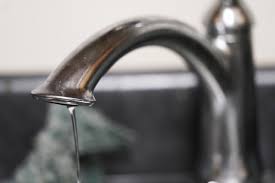Chloramine is:
But… chloramine is different than chlorine.
Chloramine is produced by combining chlorine with Ammonia.
In many ways chloramine is far less effective at disinfecting (2,000 and 100,000 times less for E. Coli and rotaviruses according to WHO).
Chloramine doesn’t easily dissipate like chlorine by boiling, distilling or letting stand.
Chloramine may have disinfection by products which are more toxic than chlorine and which we’re only just beginning to understand.
Chloramine, and particularly the tri-chloramine variant, is a respiratory irritant. Research suggests that aerosolizing and heating chloriminated water vaporizes it, releasing as much as 50% to 80% of dissolved solids in the water… which we do every time we shower. (CCAC)
Chloraminated water is unsafe for fish and dialysis machines.
Ultimately chloramine is understudied. We just don’t have enough information about it. There are a lot of serious people raising questions about it, and there are a lot water suppliers assuring the public that it’s perfectly safe.
More resources:
Erin Brockovich gives an overview of chloramine and the issues surrounding it
http://www.vce.org/ErinBrockovichChloramination.html
Good fact-sheet on chloramine from Citizens Concerned About Chloramine (CCAC)
http://www.chloramine.org/chloraminefacts.htm
World Health Organization analysis (technical) of chlorine and chloramine and their byproducts and effectiveness
http://www.who.int/water_sanitation_health/dwq/S04.pdf
EPA’s public resources about chloramine
http://www3.epa.gov/region9/water/chloramine.html
LADWP’s fact-sheet on chloramine
https://www.ladwp.com/ladwp/faces/ladwp/aboutus/a-water/a-w-waterquality/a-w-wq-factsheetsandbrochures
- De-zincing the brass from fixtures
- Stripping lead from older pipes — and putting it into the customer’s water
- Deteriorating o-rings and other rubber products in faucets and toilets causing leaking and requiring replacement at an unprecedented rate
- New copper flaking off in water
- Accelerating scale build up in tank and tankless water heaters
But… chloramine is different than chlorine.
Chloramine is produced by combining chlorine with Ammonia.
In many ways chloramine is far less effective at disinfecting (2,000 and 100,000 times less for E. Coli and rotaviruses according to WHO).
Chloramine doesn’t easily dissipate like chlorine by boiling, distilling or letting stand.
Chloramine may have disinfection by products which are more toxic than chlorine and which we’re only just beginning to understand.
Chloramine, and particularly the tri-chloramine variant, is a respiratory irritant. Research suggests that aerosolizing and heating chloriminated water vaporizes it, releasing as much as 50% to 80% of dissolved solids in the water… which we do every time we shower. (CCAC)
Chloraminated water is unsafe for fish and dialysis machines.
Ultimately chloramine is understudied. We just don’t have enough information about it. There are a lot of serious people raising questions about it, and there are a lot water suppliers assuring the public that it’s perfectly safe.
More resources:
Erin Brockovich gives an overview of chloramine and the issues surrounding it
http://www.vce.org/ErinBrockovichChloramination.html
Good fact-sheet on chloramine from Citizens Concerned About Chloramine (CCAC)
http://www.chloramine.org/chloraminefacts.htm
World Health Organization analysis (technical) of chlorine and chloramine and their byproducts and effectiveness
http://www.who.int/water_sanitation_health/dwq/S04.pdf
EPA’s public resources about chloramine
http://www3.epa.gov/region9/water/chloramine.html
LADWP’s fact-sheet on chloramine
https://www.ladwp.com/ladwp/faces/ladwp/aboutus/a-water/a-w-waterquality/a-w-wq-factsheetsandbrochures




